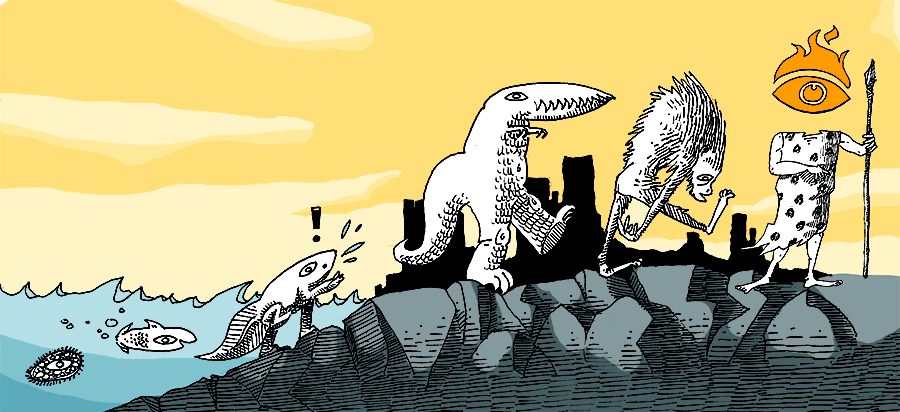A Mercifully Brief History of Graphic Design, Part I

As with most human inventions, it began with the cavemen.
You know the story; a pack of grunting Cro-Magnons returns victorious from the hunt, boasting of their great feats. “That Sabre-Tooth tiger must have had foot-long fangs! How many Mammoths did you kill?”
They quickly realize they need a way of tracking their kills, a way to remember where the largest herds were, or maybe just a way of remembering a really good time. The tribe then singles out one of the skinnier, less hairy, more upstanding members to document all of this on the nearest cave wall.
And so, graphic design was born. Over time the images became more abstract, gradually evolving into written language. The Egyptians (and other ancients) found that communication effectiveness could be maximized by mixing words and images, as seen in hieroglyphs.
Skip forward a few years.
After several millennia of practice, humans have gotten pretty good at combining images and written language. Armies rally around their nations’ flags and crests. Elaborate oral traditions are captured on lengthy manuscripts. Graphic design becomes more than a means of recording events–it becomes a business tool.
But as trade between countries increases, a new issue arises. Astute copycats see a successful product and start producing their own cheap knockoffs. This creates confusion in the marketplace.
“How do we know if it’s the Real McCoy?” the restless masses chant. It’s a real quandary.
Once again, graphic design saves the day: kings begin to use royal seals to legitimize documents, herdsmen keep track of their cattle by branding them, and coinage is issued bearing the images of gods and athletes. These images send a clear message: This is the original, it can be trusted.
And so, branding was born: the use of imagery to separate the “real thing” from the “imitation.” At Fireman Creative, we use it in much the same way: our goal is to give our clients the kudos they deserve for providing excellent services or products.
A brand is a snapshot of an organization. In the same way that a cave painting told cavemen which valley had the most woolly mammoths, a brand encapsulates what is distinct about a product, service, or company. It is the beginning of that organization’s story.
Branding in those days was a far cry from what we see now. There were no agencies, no creative brainstorming sessions, no brilliant campaigns. There was no need for megalithic identities such as Coca-Cola or Target because there was very little competition, not much money involved, and even less economic stability. People were more concerned with avoiding the Black Plague than picking out a nice pair of Crocs.
This limited approach to graphic design continued right up until the beginning of the Industrial Revolution. To find out what branding became and how it’s used today, you’ll have to read next Friday’s installation!
 Fort Ligonier Days: 60th Anniversary
Fort Ligonier Days: 60th Anniversary  JCC PGH: Center for Loving Kindness
JCC PGH: Center for Loving Kindness  Wagner Agency
Wagner Agency  OBID: You Are Here
OBID: You Are Here  Breathe Project
Breathe Project
Be the first to comment!